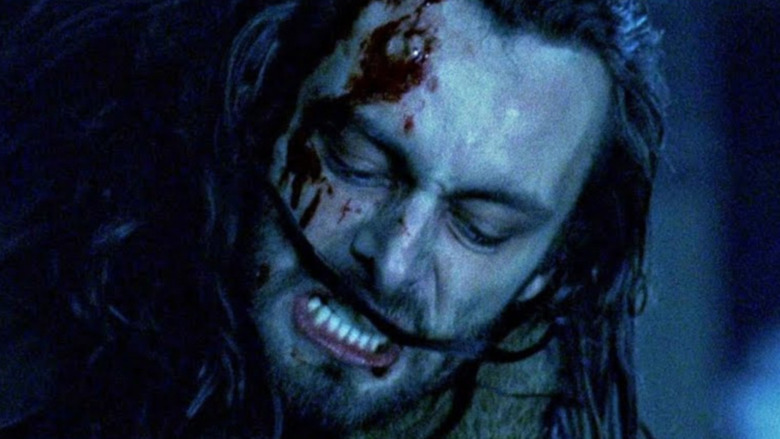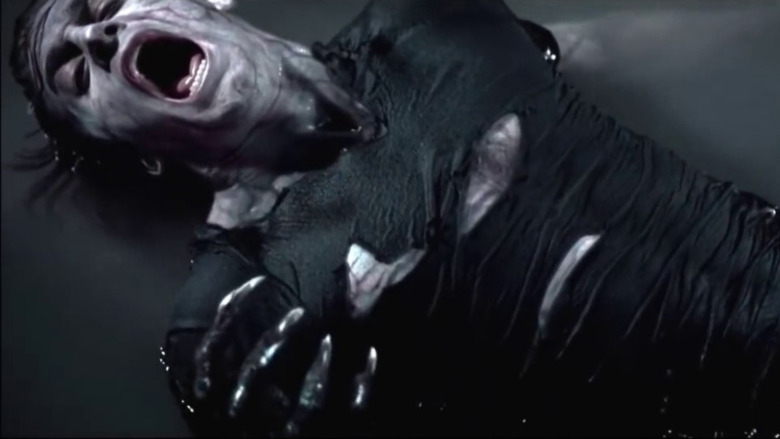The Lycan Detail That Bothers Most Underworld Fans
The suspension of disbelief is a funny thing. Filmmakers rely on it to convince audiences that the incredible and the impossible are real. But, as with anything else in the world, there are limits; things need to stay reasonably plausible within context, whether the events unfolding are even remotely possible. Every one of the "Underworld" films and the cinematic universe in which they take place are great examples. Viewers have to check certain things at the proverbial door, namely the fact that vampires and lycans and whatever Michael's (Scott Speedman) lycan-vampire hybrid deal is (we prefer lycanpire) don't actually exist in the real world. Additionally, there's the fact that it's seemingly always raining, despite the films not being set in London — according to Fandom, the franchise mostly takes place in Budapest, Hungary. Of course, had anyone said at the time that "Underworld" franchise star Kate Beckinsale — who plays Selene — would have ended up dating the likes of Pete Davidson, we're pretty sure the suspension of disbelief would have been annihilated for all eternity.
Digression aside, there's one particular detail from the "Underworld" universe that some fans just can't get past, and it has to do with lycan physiology.
Why do lycans take so long to transform in Underworld?
"Underworld" fans will concede the existence of lycans, vampires, werewolves, and probably the Loch Ness Monster to the suspension of disbelief, but one thing that makes no sense is why lycans take so dang long to transform. The topic came up on Reddit when fans discussed "Underworld: Blood Wars" on the popular r/Movies subreddit. "At some point I hope they speed up the lycan transformation process because it's getting increasingly ridiculous watching 40 guys with assault rifles politely standing around while their enemies go into super mode for a solid 20 seconds. Incidentally would also save both costs and time," user Saitoh17 said. Another user, Arcian_, addressed the issue another way: "I found myself constantly asking 'Why don't they shoot the lycans when they're transforming?'"
It's a fair criticism. The filmmakers never really make it clear at what speed the lycans transform. In order to make the metamorphosis properly cinematic, it appears to take several seconds; whether or not time is slowed during these sequences so that the transformations can be rendered in great detail is unclear. As a result, it appears very much like what the above users describe: that for whatever amount of time, no one is shooting at the lycans as they change out of their civvies to go au naturale. It's either ridiculously good luck on their behalf, not getting hit in the meantime, or a matter of someone forgetting to add in the lycan equivalent of bullet time CGI effects in post-production.

